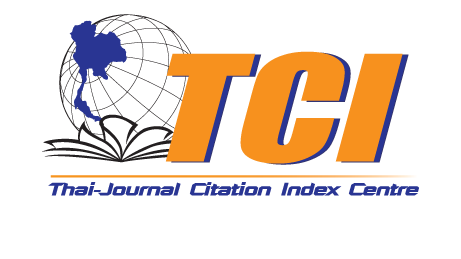Indexing

The manuscript must adhere to the following guidelines:
Click here to download the template
1. Length and Formatting
For research articles, the manuscripts do not exceed 8,000 words from introduction to conclusion, excluding references. Review articles should not exceed 10,000 words from introduction to conclusion, excluding references. Use the "Times New Roman" font, size 12 point.
2. Figures and Tables
Number each figure and table sequentially (e.g., Figure. 1, Table.1), with a maximum of 10 items. Attach high-resolution images (JPG or TIFF, 300-600 dpi) with the manuscript. Provide clear, concise, and accurate captions. Ensure descriptions in all figures and tables are in English and self-explanatory. Obtain permission for copyrighted items; this responsibility lies with the author.
3. Manuscript Structure
3.1 Information Section
Title: Ensure it is clear, concise, and accurately reflects the content. Author Details and Contact Information: Include names, affiliations, institutional email addresses, and primary contact information.
Abstract: The abstract should not exceed 250 words and should cover the study objectives, methodology, results, and conclusion.
Keywords: List 3-5 relevant keywords.
Introduction: State the purpose, hypothesis, literature review, and gaps in previous studies.
Materials and Methods: Authors should clearly define their research design and methodology, detailing data collection and analysis techniques, while ensuring validity and reliability. Address ethical considerations, including approvals and participant consent, and acknowledge any study limitations.
Results and Discussion: Use tables and graphs in the Results section to clearly present key data without redundantly describing visual information. The Discussion section should focus on interpreting findings rather than restate them, whether presented separately or combined with the Results section.
Conclusions: Summarize findings, their implications, limitations, and suggest further research.
Acknowledgment (if applicable): Include details of the research project, funding source, and year.
Footnotes: Use footnotes sparingly and number them consecutively. You may use system tools to insert footnotes directly or indicate their placement in the text and list them in a separate section at the end of the article.
References: Use footnotes and a bibliography in English, adhering to the American Psychological Association 7th edition. Ensure all citations are accurate and consistent. Avoid citing non-academic websites.
Book
Jackson, L. M. (2019). The psychology of prejudice: From attitudes to social action (2nd ed.). American Psychological Association.
Book Chapter
Bornstein, M. H., Hahn, C. S., Suwalsky, J. T. D., & Haynes, O. M. (2003). Socioeconomic status, parenting, and child development: The hollingshead four-factor index of social status and the socioeconomic index of occupations. In M. H. Bornstein & H. B. Robert (Eds.), Monographs in parenting series. socioeconomic status, parenting, and child development (pp. 29–82). Lawrence Erlbaum Associates.
Journal Article
Grady, J. S., Her, M., Moreno, G., Perez, C., & Yelinek, J. (2019). Emotions in storybooks: A comparison of storybooks that represent ethnic and racial groups in the United States. Psychology of Popular Media Culture, 8(3), 207–217. https://doi.org/10.1037/ppm0000185.
Conference Paper
Dillard, J. P. (2020). Currents in the study of persuasion. In M. B. Oliver, A. A. Raney, & J. Bryant (Eds.), Media effects: Advances in theory and research (pp. 115–129). Routledge.
Theses
Ata, A. (2015). Factor effecting teacher-child communication skill & selfefficacy beliefs: An investigation on preschool teachers [Master’s thesis]. Middle East Technical University Library. http://etd.lib.metu.edu.tr/upload/12619101/index.pdf
Royal Gazette
The Act on Investment Promotion (No.3) B.E. 2544. Royal Thai Government Gazette, 118, 110A (30 November 2001), 1-4
Webpages and Websites
Bologna, C. (2019, October 31). Why some people with anxiety love watching horror movies. HuffPost. https://www.huffpost.com/entry/anxiety-love-watching-horror-movies_l_5d277587e4b02a5a5d57b59e.
Newspaper and Online Newspaper
Brody, J. E. (2007, December 11). Mental reserves keep brain agile. The New York Times. http://www.nytimes.com.
3.2 Animal Ethics for Publications
Vertebrate and higher invertebrate animals used for research and testing must have their welfare respected.The handling of the animals ethically should be fully stated by the authors in their manuscript. Before the reference list, there should be a section called "Declarations" that includes a statement describing the ethics related to employing animals in research. Funding, conflicts of interest, ethics approval, consent, data and/or code accessibility, and author contributions disclosures. Please review the phrasing choices below and edit or change the sample phrases according to your needs.
" All procedures involving animals were in compliance with the ethical approval by the Mahasarakham University Ethics Committee (No. 001/2023)."
3.3 Research Involving Human Participants
Human used for research and testing must have their welfare respected.The handling of human participants ethically should be fully stated by the authors in their manuscript. Before the reference list, there should be a section called "Declarations" that includes a statement describing the ethics related to employing human participants in research. Please review the phrasing below and edit or change the sample phrases according to your needs.
" All procedures performed in studies involving human participants were in accordance with the ethical standards of the Mahasarakham University Ethical committee. The study was approved by Mahasarakham University Ethical committee (No. 001/2023)"
3.4 Policy on the Use of Artificial Intelligence (AI) and AI-Assisted Technologies
Authors must disclose any use of generative AI or AI-assisted technologies in the writing process at the time of submission. These tools may be used solely to enhance readability and language, under strict human oversight. Authors are responsible for verifying all content, as AI can produce incorrect or biased information. AI tools must not be listed as authors or co-authors. A disclosure statement must be included at the end of the manuscript upon initial submission.
………………………………………………………
All correspondence should be directed to:
Food Agricultural Sciences and Technology (FAST),
Division of Research Facilitation and Dissemination (DRFD),
Mahasarakham University, 41/20 Khamriang Sub-District, Kantarawichai District, Maha Sarakham, 44150 Thailand.
Phone: (66) 43-754416
Fax: (66) 43-754416
E-mail: fast@msu.ac.th , https://ph02.tci-thaijo.org/index.php/stej/index

